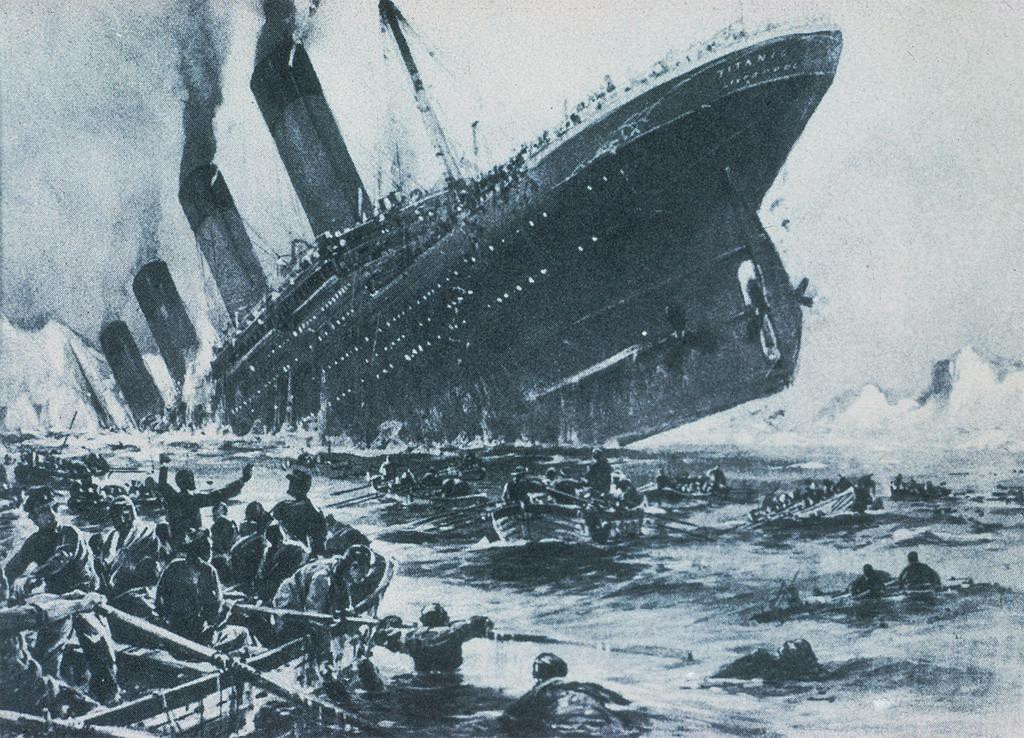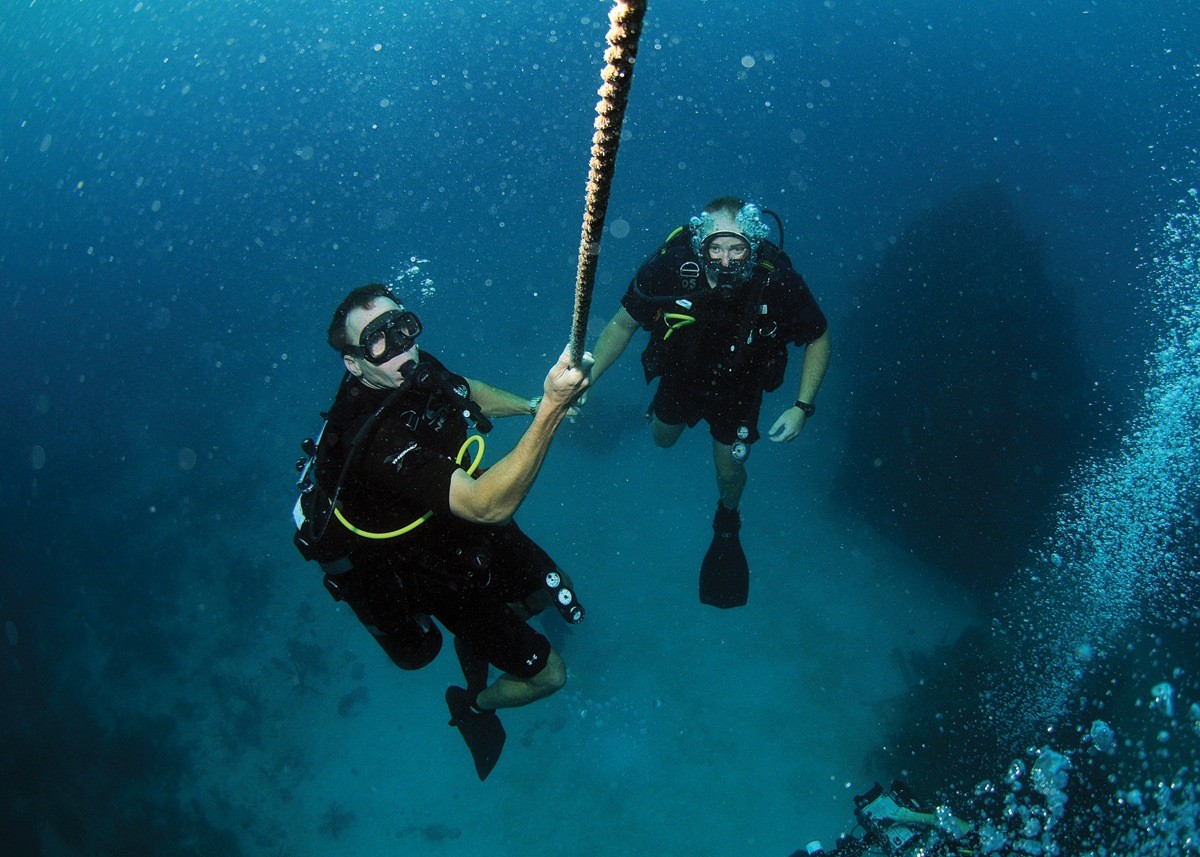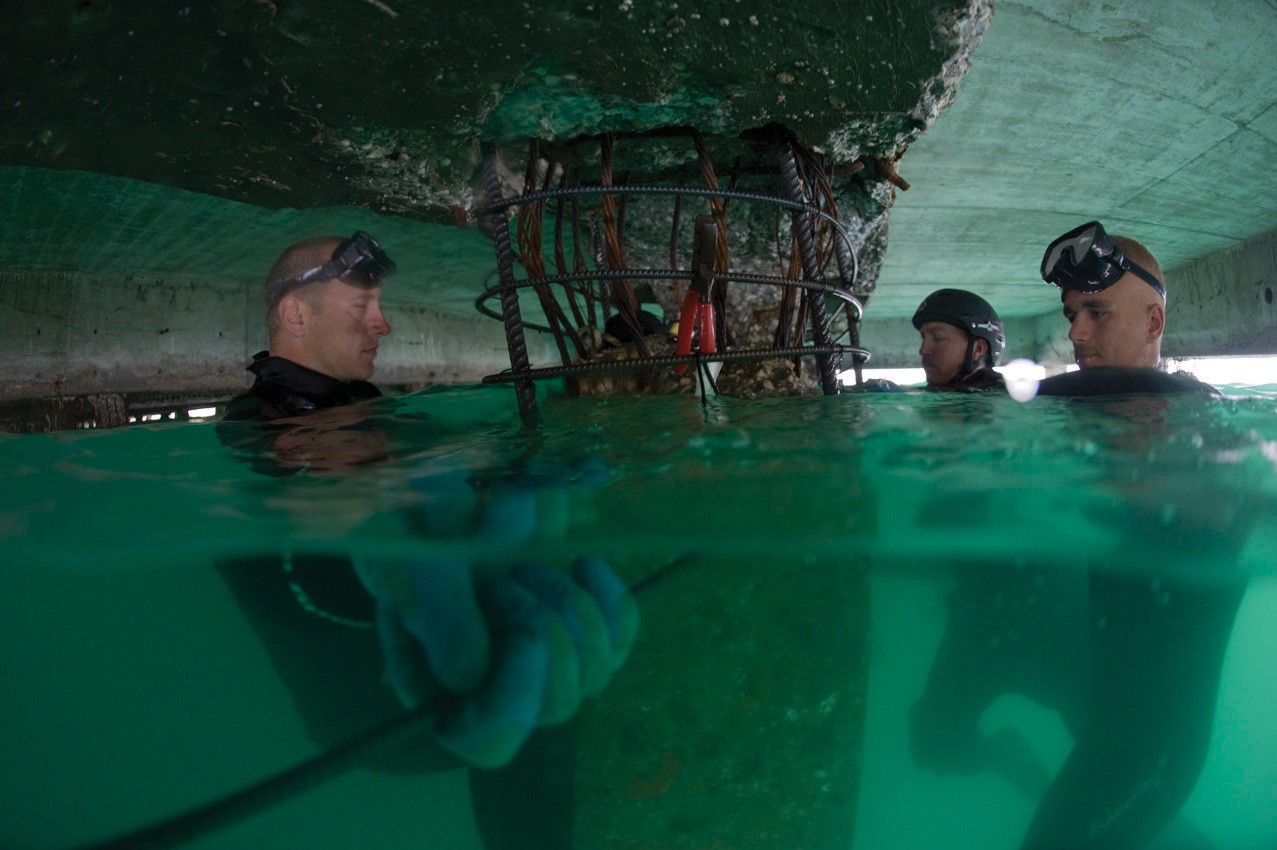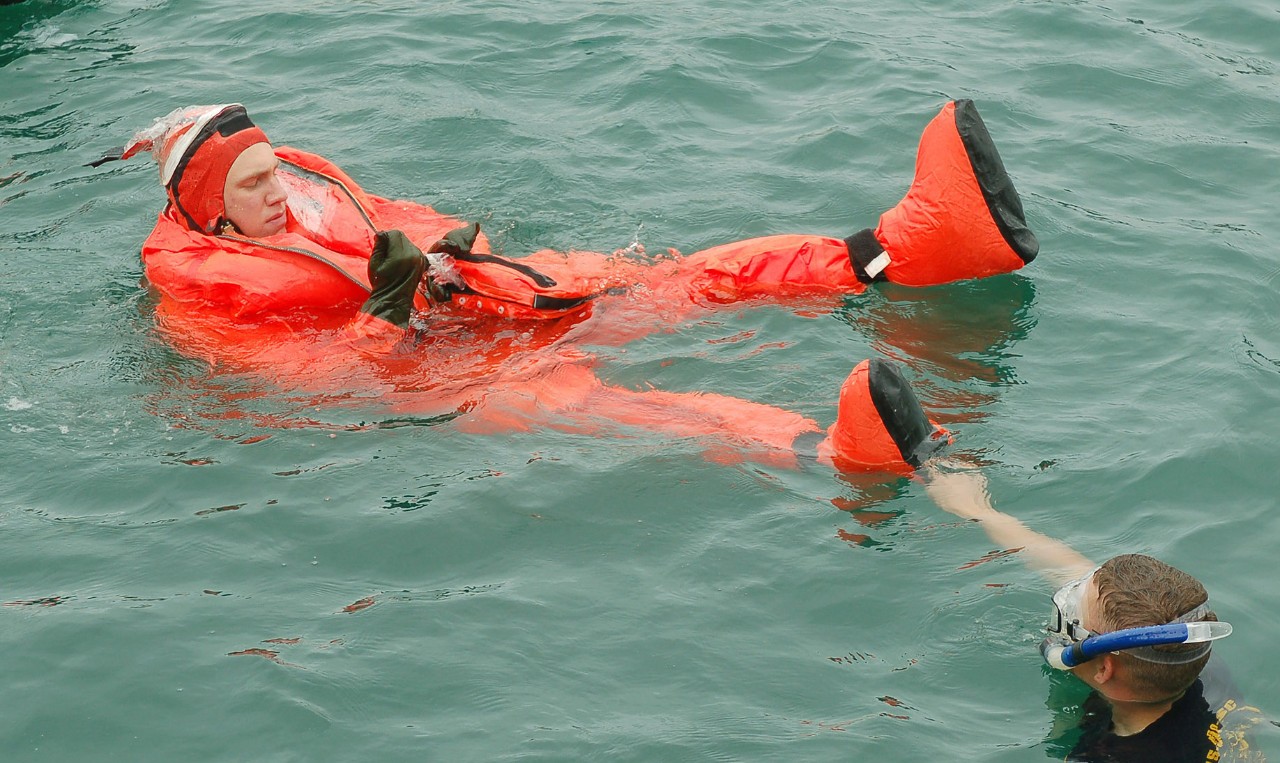The Dangers of the Sea
The Dangers of the Sea
The ocean does not welcome people to its depths. The deeper we go, the less welcome we are.
Click photograph for a larger image.
Temperature
Ocean water becomes colder the deeper a diver descends. Cold water can cause fatigue, clumsiness, and confusion. Prolonged exposure can cause hypothermia in a diver, resulting in disorientation, loss of consciousness, and death. Diving suits provide insulation and warmth that divers need to work safely in cold water.
Photo: Most of the passengers on the Titanic who perished did not drown; they died of hypothermia in the frigid 28oF water. Hypothermia occurs when a person's body loses heat faster than it produces it.
Pressure
The deeper divers descend into the ocean, the greater the water pressure they experience. Most diving suits are made of fabric and do not protect against pressure. Only atmospheric diving suits (ADS) shield divers from the effects of water pressure.
Photo: Water pressure increases significantly with depth. For every 33 feet a diver descends, the water pressure in saltwater increases by 1 atmosphere (14.7 lbs/in2).
Environment
Navy divers often work in hazardous environments. Dive sites may contain sharp or abrasive materials, chemical or sewage pollutants, or stinging sea life. Diving suits made of thick Neoprene or nylon protect divers from these threats.
Photo: Divers from Underwater Construction Team One attach re-enforcement bars to sections of a pier in Port-au-Prince, Haiti, that were damaged during the 2010 earthquake.
Survival Suit
Although not typically worn by divers, the survival suit remains an important piece of gear for Navy personnel. A Sailor would don this survival suit after abandoning a sinking or capsized vessel, especially in the open ocean. The suit's waterproof properties and attached boots, hood, and gloves help protect its wearer from hypothermia. It can extend a Sailor's survival for several hours.






